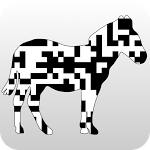If it doesn't, we gonna make it.
ZXing ("zebra crossing") is an open-source, multi-format 1D/2D barcode image processing library implemented in Java, with ports to other languages.
See Projects and Milestones for what is currently done and what's planned next. 👀
| 1D product | 1D industrial | 2D |
|---|---|---|
| UPC-A | Code 39 | QR Code |
| UPC-E | Data Matrix | |
| EAN-8 | Code 128 | Aztec |
| EAN-13 | PDF 417 | |
| ITF | ||
| RSS-14 | ||
* In progress, may have open PR.
See Live Preview in browser.
Note: All the examples are using ES6, be sure is supported in your browser or modify as needed, Chrome recommended.
npm i @zxing/library --save
or
yarn add @zxing/library
On iOS-Devices with iOS < 14.3 camera access works only in native Safari and not in other Browsers (Chrome,...) or Apps that use an UIWebView or WKWebView. This is not a restriction of this library but of the limited WebRTC support by Apple. The behavior might change in iOS 11.3 (Apr 2018?, not tested) as stated here
iOS 14.3 (released in december 2020) now supports WebRTC in 3rd party browsers as well 🎉
The browser layer is using the MediaDevices web API which is not supported by older browsers.
You can use external polyfills like WebRTC adapter to increase browser compatibility.
Also, note that the library is using the TypedArray (Int32Array, Uint8ClampedArray, etc.) which are not available in older browsers (e.g. Android 4 default browser).
You can use core-js to add support to these browsers.
In the PDF 417 decoder recent addition, the library now makes use of the new BigInt type, which is not supported by all browsers as well. There's no way to polyfill that and ponyfill libraries are way to big, but even if PDF 417 decoding relies on BigInt the rest of the library shall work ok in browsers that doesn't support it.
There's no polyfills for BigInt in the way it's coded in here.
// use with commonJS
const { MultiFormatReader, BarcodeFormat } = require('@zxing/library');
// or with ES6 modules
import { MultiFormatReader, BarcodeFormat } from '@zxing/library';
const hints = new Map();
const formats = [BarcodeFormat.QR_CODE, BarcodeFormat.DATA_MATRIX/*, ...*/];
hints.set(DecodeHintType.POSSIBLE_FORMATS, formats);
const reader = new MultiFormatReader();
reader.setHints(hints);
const luminanceSource = new RGBLuminanceSource(imgByteArray, imgWidth, imgHeight);
const binaryBitmap = new BinaryBitmap(new HybridBinarizer(luminanceSource));
reader.decode(binaryBitmap);See Contributing Guide for information regarding porting approach and reasoning behind some of the approaches taken.
Special thanks to all the contributors who have contributed for this project. We heartly thankful to you all.
And a special thanks to @aleris who created the project itself and made available the initial QR code port.













